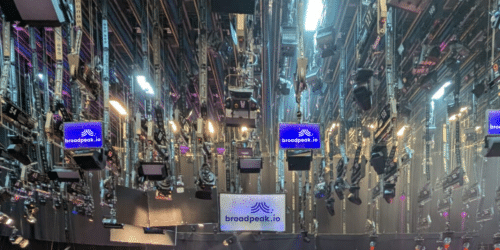While the streaming market is now well-engaged on the road to ad-supported models, a few stumbling blocks have started to emerge on the horizon. Any video streaming service provider transitioning to AVOD has or will, at some point, come across the challenge of properly managing ad opportunity placements. This set of cue points is an essential content metadata required to manage mid-roll ad breaks and is at the cross point between QoE and monetization. A closer look puts us right into how a service platform backend, an SSAI, an ad server, and an OTT client need to work together.
Creating the right inventories
With VoD instream advertisement, inventory is essentially generated from pre-roll, mid-roll, and occasionally post-roll ad breaks. While pre- and post-rolls are unique, the mid-roll sequence can be distributed in multiple ways. Deciding which set of mid-rolls to use directly relates to the commercial plan offering. Let’s take the example of a publisher adding 2 new packages to an SVOD offering and using the following business rules:

In this example, we see that the $5 monthly revenue in the standard plan needs to be generated by 5 minutes per hour of additional ad load or advertising revenue (CPM impressions) in the basic plan case. Assuming end users are watching 1 hour of content per day, this average streaming time would generate an additional 150 minutes of ads per month. Assuming 20 seconds per ad, those 450 monthly ads would lead to $11/CPM to match the required revenue target.
From a workflow standpoint, this scenario shows that end users with different plans are leveraging different subsets of cue points, although they stream the same content. As mid-roll distribution may vary from one segment to another, we realize that it needs to adapt to different sets of metrics and requirements.
Ad Proxy
In an ideal world, all ad servers would support the generation of a VMAP schedule to tell the SSAI where to insert ads in the VOD content. In the real streaming world, this is not always the case. This is why we decided to build an Ad Proxy in our stack, with a VMAP generator module, and solve the problem.
Let’s review some options:
- Use case 1: basic content
In this case, the inventory is created by a static pattern with regular ad break frequency (e.g. 2 minutes ad break every 15 minutes)
Although not ideal in terms of user experience, the benefit of this approach is simplicity and time to market.
There is no need to identify or use cue points from the original content, and different patterns can also be used for different plans.
- Use case 2: premium content
In this scenario, inventory is created by dynamic patterns.
Cue point metadata is acquired from the backend for each session and dynamically passed from the client to the ad server through the SSAI engine.
The Ad Proxy extracts that metadata from the request URL and builds an ad schedule accordingly, with VAST tags decorated in such a way that the ad server can select and fill only the relevant ones with appropriate ads.
The benefit of this approach is a fully controlled QoE and inventory creation.

Conclusion
The rollout of AVOD benefits publishers, but ad-supported workflows come with certain requirements. Cue points metadata management, stream conditioning, business rules, and ad campaign definition are all part of the same solution. They can be tackled through multiple approaches, each with its benefits. From a business standpoint, creating the appropriate inventory for the relevant commercial plan and audience is necessary. As competition between publishers increases and QoE expectation from end users grows, controlling the QoE is also becoming a table stake.
If you want to know more about this specific topic, look at how to use the Ad Proxy in our Knowledge Center and come over at IBC 2023 on booth: Hall 1 #1.F76 or reach out to us any time!
Banner photo by Rhys Abel on Pexels










